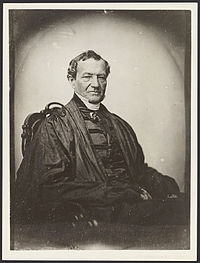Post Author: Bill Pratt
In part 1 of this post, we discussed Simon Greenleaf’s conclusion that the Gospel writers’ testimony about Jesus Christ should be considered true, based on the canons of legal evidence, an area in which he was an undisputed expert. Some skeptics, however, have argued that the standards for judging the credibility of the Gospels should be much higher than what Greenleaf has proposed. It is to this question we now turn.
Greenleaf makes a strong case for the kind of evidence that skeptics should be requesting, with regard to the Gospel narratives. Here I provide his detailed thoughts:
It should be observed that the subject of inquiry is a matter of fact, and not of abstract mathematical truth. The latter alone is susceptible of that high degree of proof, usually termed demonstration, which excludes the possibility of error, and which therefore may reasonably be required in support of every mathematical deduction. . . . In the ordinary affairs of life we do not require nor expect demonstrative evidence, because it is inconsistent with the nature of matters of fact, and to insist on its production would be unreasonable and absurd. . . . The error of the skeptic consists in . . . demanding demonstrative evidence concerning things which are not susceptible of any other than moral evidence alone, and of which the utmost that can be said is that there is no reasonable doubt about their truth.
In the case of the Gospel narratives, “A proposition of fact is proved, when its truth is established by competent and satisfactory evidence.” What is competent and satisfactory evidence?
By competent evidence is meant such as the nature of the thing to be proved it requires; and by satisfactory evidence is meant that amount of proof, which ordinarily satisfies an unprejudiced mind, beyond any reasonable doubt. The circumstances which will amount to this degree of proof can never be previously defined; the only legal test to which they can be subjected is their sufficiency to satisfy the mind and conscience of a man of common prudence and discretion, and so to convince him, that he could venture to act upon that conviction in matters of the highest concern and importance to his own interests. . . . When we have this degree of evidence, it is unreasonable to require more. A juror would violate his oath, if he should refuse to acquit or condemn a person charged with an offense, where this measure of proof was adduced.
Greenleaf rejects the call for apodictic proof in the case of the Gospel testimonies because nobody ever requires this kind of evidence when it comes to the affairs of human history. We only require enough evidence to show that the events were probable. Even in courts of law, where the jury must determine whether a defendant is to die for his alleged crimes, the bar for conviction is no reasonable doubt.
When the accounts of Jesus’ life are subjected to the rigors of legal analysis, they fare quite well. Greenleaf urges his readers to set aside their prejudices and take a look at the evidence. If they do so, they will be left with no reasonable doubt.